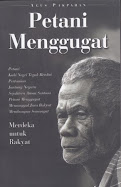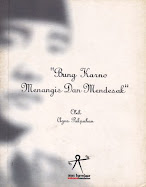The Jakarta Post , Jakarta | Thu, 09/28/2006 9:31 AM | Opinion
Agus Pakpahan, Jakarta
Despite the progress in technology, many nations in the world continue to face food and energy shortages. Poverty, hunger, and unemployment threaten lives here and in other developing countries.
Without encouraging agricultural industrialization, which enables countries to reap the highest possible value from agricultural primary produce, the country is losing out on many opportunities for new income and employment.
There is a rule of thumb that farmers gain more benefits from agriculture if their products are processed before they are exported.
There are more than 100 products that can be produced from sugarcane, corn, cassava, palm oil and rice. Indonesia will gain many additional valuable commodities if it processes primary commodities into added-value products such as food, vitamins, minerals, fuel, feed and others. For example, the price of a 3lb bag of organic rice bran made with Super C powder, a powdered form of Vitamin C with a special mineral electrolyte balance, and effective microorganisms, or EM1, is sold internationally for around US$12.95.
A necessary condition for agricultural industrialization is the availability of sufficient energy. A 2004 study conducted by United Nations Development Programme shows there is a positive correlation between the Energy Development Index (EDI) and Human Development Index (HDI).
The recent fossil fuel energy crisis has increased energy costs and had an extremely negative impact on the sustainability of industry. However, this situation has encouraged people to go to significant lengths to find new energy alternatives.
One potential source of energy here is currently being overlooked. About 12.1 million tons of rice husk are produced annually from the total 55 million tons of rice harvested by local farmers. A study indicates that one ton of rice can produce 220 kg of husk, which can generate about 150 kilowatt/hours of power. If the 12.1 million tons of available husk is converted into energy, one could generate around 8.2 GWh of power a year.
Now, let's suppose one builds a power plant, or unit of co-generation (co-gen), with a capacity of 4.5 MWh. This size plant is able supply electricity to 5,000 households, each of them using 900 watts of energy. The potential 8.2 GWh/year source is enough to support 1,822 units of cogen with a capacity of 4.5 MWh. It means that about 9.1 million households will be able to consume 900 watts of electricity.
Investment in cogens to produce electricity by using rice husks could lead to a revolution in rural development. New employment and income opportunities would also emerge in rural and urban areas.
This new energy will save on fossil fuels and reduce the environmental damage caused by pollution, while carbon trading will give farmers new opportunities to generate income. Foreign exchange earnings can be saved from fossil fuel import reductions and rural communities will grow in a healthy way.
If Indonesians want to see how rural agriculture can be developed, they only have to look to their neighbors in Thailand or Malaysia. A vital issue here is that rice husk can only be collected in economic quantities to create energy if rice milling units are revitalized into modern forms on a scale that can be integrated with a unit of cogen.
Because most farmers here cultivate on a small scale, or less than 1 hectare, they must be organized them into a unit of work that enables the efficient collection of their husk. This won't be easy but it is feasible. Consolidated farming means sharing the extra benefits generated from new sources of income and employment opportunities.
Producing electricity from rice husk could trigger a second agricultural revolution and create wide-scale rural industrialization. How far this idea is successfully implemented depends on how many synergies are built.
The writer is an agricultural economist with a specialization in natural resources and institutional economics.
sumber : The Jakarta Post











Tidak ada komentar:
Posting Komentar